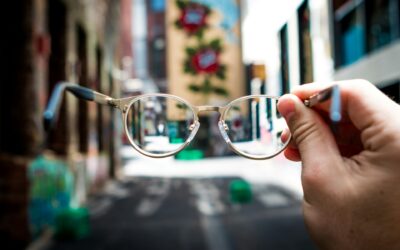Emmetropia is a term commonly used in the field of eye care to describe someone whose eyes have normal vision without the need for glasses or contacts. While the term may seem unfamiliar, its meaning is quite simple. In this blog, we will delve into the concept of emmetropia, exploring how it relates to the bending of light in the eye and the resulting ability to see clearly at various distances.
The Science Behind How Normal Vision Occurs
Emmetropia refers to the ideal state of the eye’s ability to bend light and focus it precisely on the retina, the part of the eye responsible for forming clear images. In an emmetropic eye, the light rays entering the eye are bent perfectly, hitting the retina directly rather than falling in front of or behind it. This precise focusing enables clear vision without the aid of corrective lenses.
Visual Clarity in Emmetropic Eyes
Emmetropic individuals typically enjoy clear vision both up close and at a distance. They do not experience significant blurriness or difficulty seeing objects in their surroundings. This natural visual clarity in emmetropic eyes allows for a seamless experience without the need for glasses or contact lenses.
It’s important to note that while emmetropia is considered the “ideal” state, it is not the only form of normal vision. Some individuals may have a slight degree of farsightedness (hyperopia) or nearsightedness (myopia) while still maintaining good vision without correction. These individuals may fall within a range of what is considered normal or mild refractive errors.
Diagnosing Emmetropia
Determining whether someone is emmetropic or not can be done through an eye examination conducted by an eye care specialist such as an optometrist or ophthalmologist. During the eye exam, various tests are performed to assess the eye’s ability to focus light and provide clear vision. The results of these tests will indicate whether an individual falls under the category of emmetropia or requires corrective lenses.
It’s worth mentioning that even though someone may be diagnosed as emmetropic at a particular age, changes in the shape and flexibility of the eye can occur over time. This means that emmetropia is not necessarily a permanent state, and regular eye check-ups are essential to monitor any shifts in visual acuity.
This is particularly important for children, as the eye can change as the child grows. A child may be diagnosed with emmetropia at the first eye exam and then in a few years the eye has grown longer and the eye is now nearsighted and requires glasses to see well in the distance.
The Role of Corrective Lenses
While emmetropia is associated with clear vision without glasses or contacts, there may still be instances where individuals opt for corrective lenses. Factors such as age, occupational demands, or personal preference can influence the use of glasses or contact lenses, even for emmetropic individuals. Additionally, certain conditions like presbyopia may develop with age, requiring the use of reading glasses or other corrective measures.





